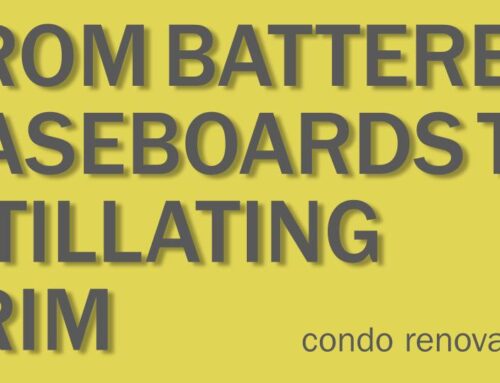Wallpaper is a relatively inexpensive way to quickly refresh a space.
Over time, though, it will start to show its age.
When wallpaper starts to tear, bubble or pull away from the wall, should you replace it entirely, or spend time making repairs? Here’s when to know whether a wallpaper repair or replacement is the way you should go.
When to Complete a Wallpaper Repair
Unless you have extensive wallpaper damage, wallpaper replacement is normally not necessary. Most of the time, completing a repair is the best solution. That’s why it’s always important that you keep some extra wallpaper on hand after completing an install!
Daily living will eventually cause wears and tears on your wallpaper. Some simple tears and wallpaper seams can be easily re-glued and become almost unnoticeable.
To patch wallpaper, cut a section bigger than the existing damaged area and align the pattern. Temporarily attach it to the wall using masking tape. Use a sharp utility knife and straightedge to cut through the patch and the wallpaper. Placing the patch aside, wet the damaged wallpaper to peel it off. After cleaning the wall and letting it dry, your new patch can adhere carefully in place. Over time, it will fade to match the other wallpaper.
Wallpaper bubbles can be easily repaired using a cut that mimics the wallpaper’s design. Check for any debris underneath the paper and then carefully force glue through the slit. Press the wallpaper smoothly to the wall again.
When to Replace Your Wallpaper
Sometimes, the wallpaper is so dirty or has such extensive damage that a replacement is the only solution.
When moisture is to blame for your peeling wallpaper, there’s a chance that mould could grow. And when that happens, you could soon have a bigger problem than just wallpaper damage!
Mould produces allergens that can cause allergic reactions, asthma attacks and other respiratory issues. The only way to eliminate the mould is to first remove the wallpaper safely using a respirator, safety goggles and gloves. Wetting the wallpaper down first will reduce the mould spores from becoming airborne. Once the wallpaper is slowly removed from the walls, the walls will need to be thoroughly sterilized. Although this targets surface mould, deep into the walls should also be checked – especially if the surfaces are soft and spongy. To do so, cut a small piece out of the drywall to see if there is mould behind the walls. If there is, the walls will also need to be replaced.
Before you install wallpaper again, ensure your moisture problem has been eradicated! Otherwise, it will only be a matter of time before your new wallpaper is also ruined.
When to Consult a Wallpaper Expert
Wallpaper professionals are able to quickly determine a cause for damage that you may otherwise miss. They are also well-versed in the best products and methods when it comes to wallpaper installations. At Folio Interiors, we can advise you on whether a wallpaper repair or replacement is the way you should go. Contact us today to learn more about our services.
By Sarah McKenzie





